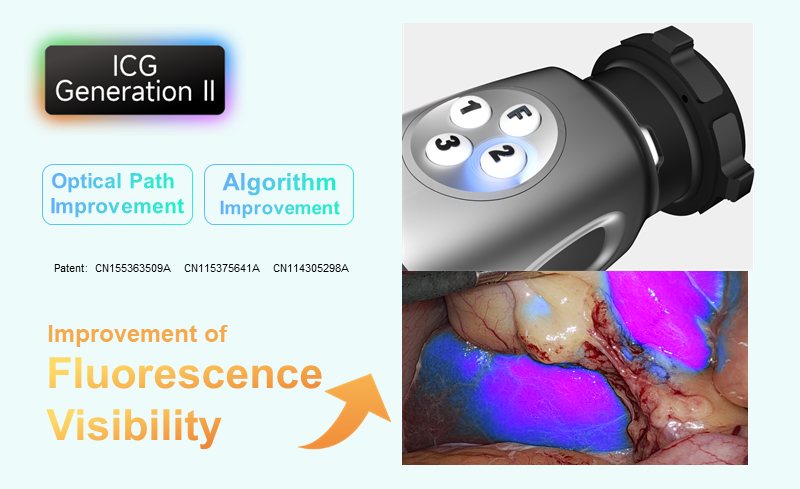Preface:With the rapid development of medical technology, 3D endoscopic surgery has gradually been popularized and recognized in clinical applications. As an important tool for modern surgical operations, the 3D endoscopic camera system has brought revolutionary changes to surgical operations with its unique three-dimensional stereoscopic imaging technology and high-definition images. However, relevant studies have shown that doctors experience discomfort such as vertigo when using the system for the first time. This phenomenon has aroused widespread concern: Why does the advanced 3D endoscopic surgical system cause vertigo? How can we effectively alleviate this problem? This issue will introduce the advantages of 3D endoscopic camera system surgery, explore the reasons why doctors may experience discomfort such as vertigo during 3D endoscopic surgery, and discuss relevant methods to alleviate the symptoms. 一、 The clinical advantages of 3D endoscope camera system are mainly reflected in the following aspects: Preoperative: accurate diagnosis and planning to reduce surgical risks 3D endoscope camera system can restore the real three-dimensional vision for doctors. Compared with traditional 2D endoscope, it can more intuitively observe the location of lesions, hierarchical relationships and the depth relationship between tissues and organs. The intuitive visual effect helps doctors make more accurate diagnoses before surgery, so as to formulate more reasonable surgical plans. Intraoperative: Improve surgical accuracy, success rate and safety: 3D images can help doctors more accurately identify the shape, structure and traction direction of tissues and lesions during surgery. This helps doctors avoid damage to small objects such as blood vessels and nerves during surgery and reduce surgical trauma. 3D endoscopic camera systems perform particularly well in operations with complex anatomical structures, such as minimally invasive surgery, organ resection and vascular connection, which improves the success rate of surgery and the survival rate of patients to a certain extent. Reduce learning barriers For young doctors, the 3D endoscope camera system can provide more parameter image information, which helps them master surgical skills faster and improve surgical skills. This will further reduce the learning barriers of young doctors and shorten the learning curve. 二、Causes of vertigo caused by the use of 3D endoscopic camera systems and factors affecting the degree of vertigo Causes of vertigo: We know that the human body’s sense of balance refers to the body’s perception of its position, posture and relationship with the surrounding environment in motion or at rest, which is composed of vestibular sense, vision and proprioception. Sensory information is integrated through afferent nerves to the vestibular nuclei, and then transmitted to the balance center of the cerebellum and hypothalamus to maintain the body’s balance. When the sense of balance deviates, the human body will have a wrong perception of its own balance state, and in severe cases, it will produce strong symptoms of vertigo. Dizziness occurs when using a 3D camera system because the motion information of the visual input does not match the motion information of the vestibular input, which is essentially a functional balance disorder. When using the system, the doctor’s body usually remains still, the proprioceptive position sense perceives stillness, and the vestibular sense does not “collect” motion information. However, the high-definition 3D realistic images allow the doctor’s vision to perceive that the objects in front of them are constantly moving, thus creating the illusion that they are also moving. This information mismatch between vision and vestibular sense causes confusion in the vestibular nuclei when integrating information, and the balance center cannot issue correct instructions, which in turn causes symptoms of dizziness. At the same time, different people have different tolerances and their performance is also inconsistent. Therefore, different people have different levels of dizziness when watching 3D videos. Factors affecting the degree of dizziness: (1) Image features: Adding images: Brightness and chromaticity: The human visual system is very sensitive to color and brightness. When viewing visual content, uneven color distribution and content that is too bright or too dark will produce an uncomfortable experience when viewing, which will cause dizziness; Parallax gradient: Images with rich image content are more likely to cause dizziness when viewing than images with simple content Temporal mutation: The intensity of the movement of the image content also reflects the degree of mismatch between vision and vestibule to a certain extent. Rapid and sudden movement changes are more likely to cause dizziness. (2) Due to the particularity of the surgery, doctors need to stare at a high-brightness, high-contrast screen for a long time, which not only puts a burden on the eyes, but also easily causes visual fatigue and dizziness. In addition, factors such as parallax, frame rate, delay, field of view and focal length in the 3D endoscopic surgery system may also exacerbate the contradiction between vision and motion perception, further causing or aggravating dizziness. In the next article we will continue to discuss measures to reduce discomfort…… DownLoad

 CN
CN







